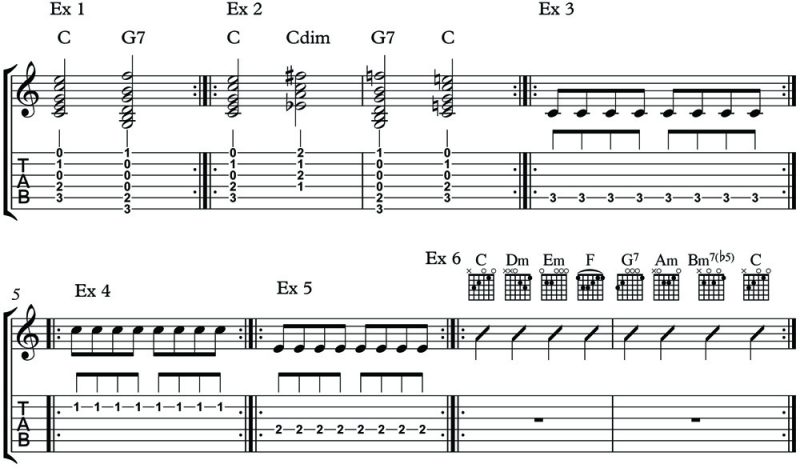Guitar Cool: Technique – Have You Got It?
Guitar Cool: Technique – Have You Got It?
Guitar players love to share their thoughts on the topic of technique. You can also find it discussed in lots of books, videos and on numerous websites. For many guitarists it seems that ‘technique’ just means to be able to play fast and flashy accurately with little effort. That simplistic approach is really missing the point because technique covers a lot of different areas for the modern player.
To look at things from opposite point of view, technique can also cover how slow or sloppy you play. Experienced players will tell you that playing very slow and precise, while keeping strict time, is very difficult to do.
But technique can also cover things like touch, movement, finger pressure, the co-ordination of the two hands, how you use music theory, how you learn songs, how you read music, etc. In fact there are techniques to everything we do as guitar players, and the better you are at all of them the better your music will be, and the easier it will be to execute what you are doing.
Let’s take a look at a few common areas of concern that affects most players.
Changing chords
Many players are very sloppy in their chord changing ability because they tend to use the wrong techniques. If you take a look at the two chords in Exercise 1 you will find you learnt them in your early guitar lessons. But how well can you change them?
Put your fingers on the chords and shift all the fingers from one chord to the other at the same time very slowly, while only lifting the fingers by around 1mm – no more. This is surprisingly challenging for most players to do very slowly, so doing it at a quick tempo is even more challenging. If you can’t do this then your technique might not be good enough to play all those songs you want to play. Make sure to do it very slowly in practice.
Now try the example in Exercise 2, using the same technique. Quite a bit more difficult isn’t it?
Finger and string pressure
For the next stage, play the static note in Exercise 3 using the normal finger pressure you use when playing. Take note of how much pressure you are applying to that note. Now begin to play that note again while backing off the pressure until the notes begin to buzz, then apply just a little more pressure to stop the buzzing.
That is how light you need to push the string down. You can most probably see that there was a big difference between how you press now and what you need to do in the future. Now you need to get used to pressing a lot lighter for all your single note work.
Now what about chords? If you go back to Ex.1 and Ex.2 try the same technique to changing chords but also press more lightly at the same time. By combining these techniques you will be able to negotiate chords a lot easier and more smoothly.
When beginning to combine certain techniques together it can get very difficult, and that is why you need to work on only one technique at a time – no more.
Pick technique
What different techniques do you know and can use with your pick? Using the notes in Exercises 3-5 now play consistent alternating down/up strokes with your pick, while keeping an even tone and volume. Again not easy to do, and this can take a while to really master.
Make sure you are only pressing lightly enough to get the strings to ring clearly with no buzzes, squeaks etc. Notice I have you playing fingers 1, 2 and 3 only for now and you will experience different finger pressures for each one, which need to be compensated for. Later you can involve the little finger.
Learning songs
What techniques do you use to learn songs quickly – or does it always take forever? Do you find that you need to go to the internet to find chords to songs? One technique is to use your theory knowledge in conjunction with your aural skills because it cuts down on the time it takes to work things out, and is much less frustrating.
For example, if you know your chord scales in the key of C major like that in Exercise 6, then if you are working out a song in the key of C you will only need to listen out for those chords only, not all the other chords you might know.
Most popular or rock songs tend to stick to the 1 (C), 1V (F), or V (G7) most of the time, while using the Dm and Am occasionally. There are millions of songs that use this formula – Google ‘4 chord songs’ and over one million results will come up.
So you can see there is a lot more to technique than many think, and a lot more to think about whenever technique is talked about. There are techniques for every area of your musical abilities.
Kevin Downing is a professional guitarist, teacher, and author. His contact details, along with many other articles and freebies, are on his website at www.guitar.co.nz

